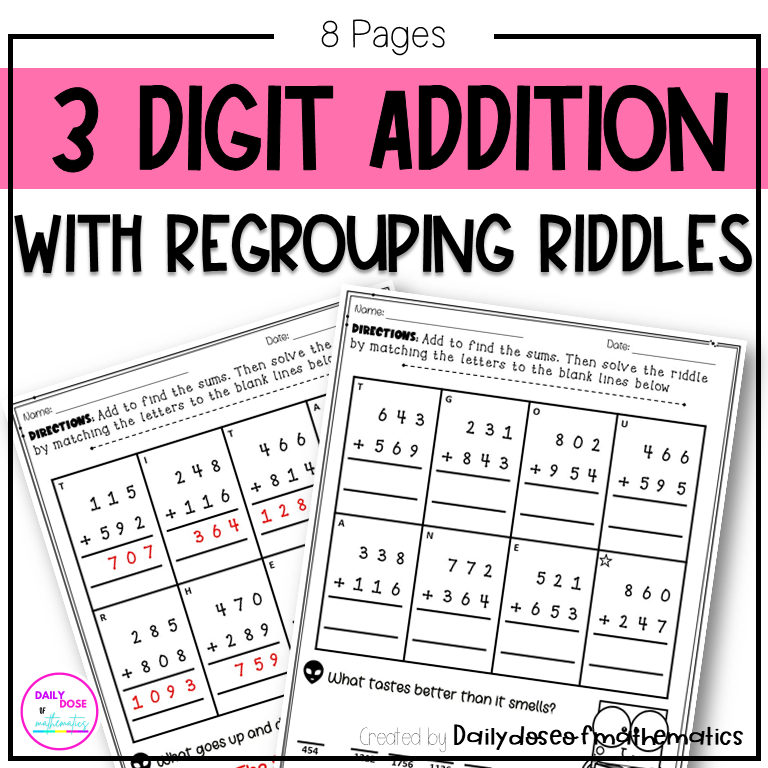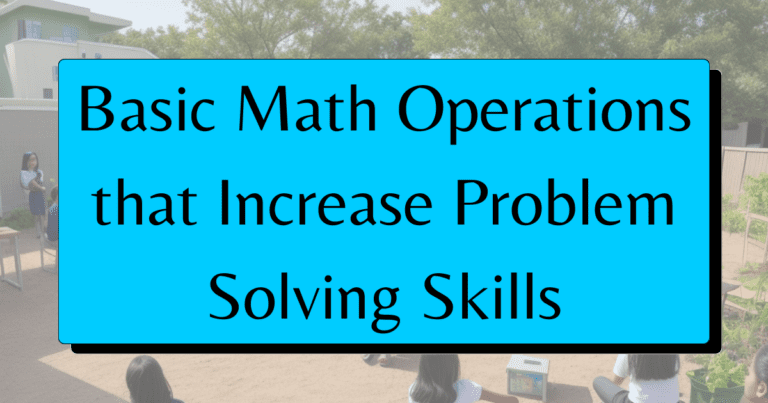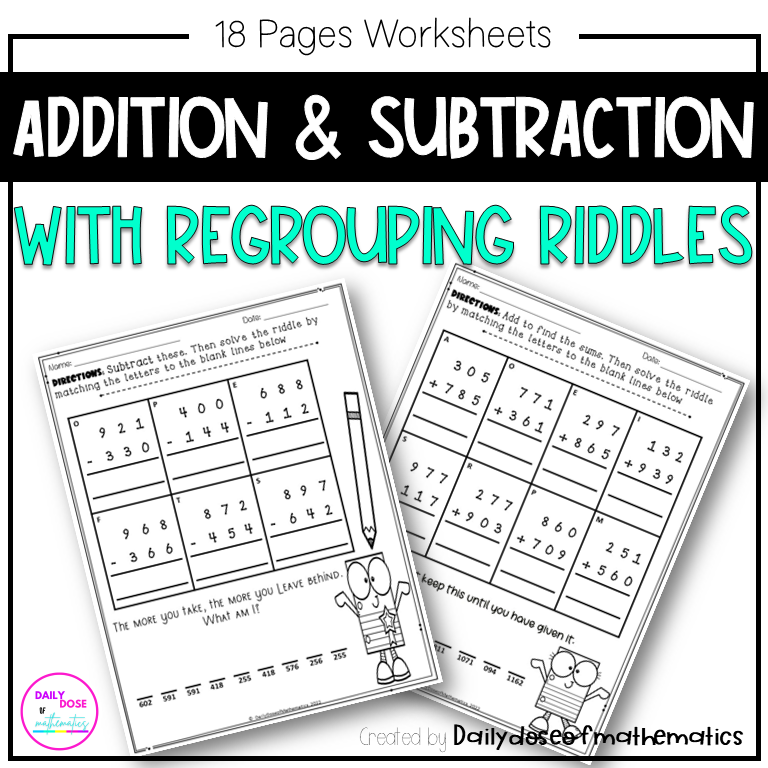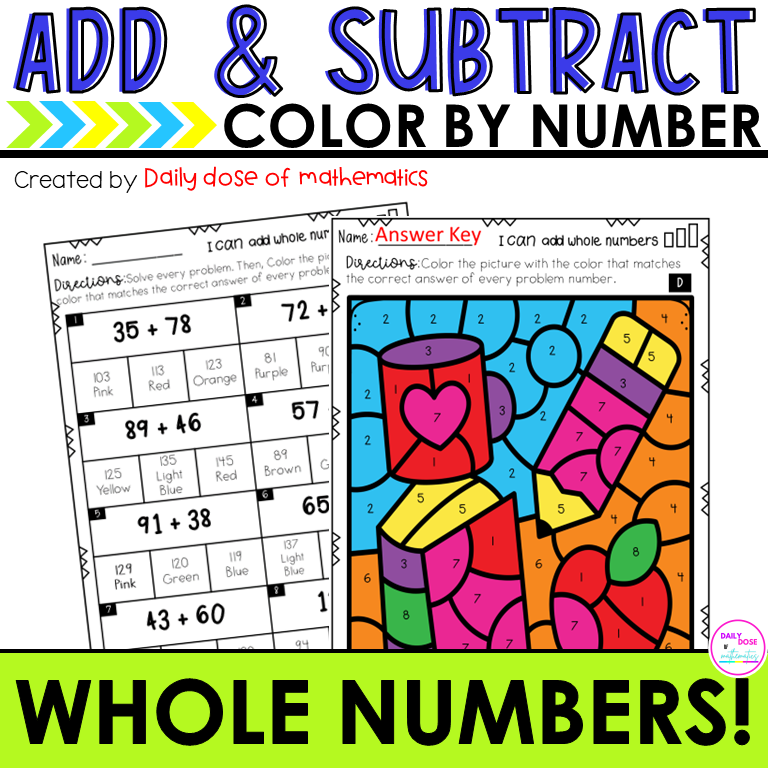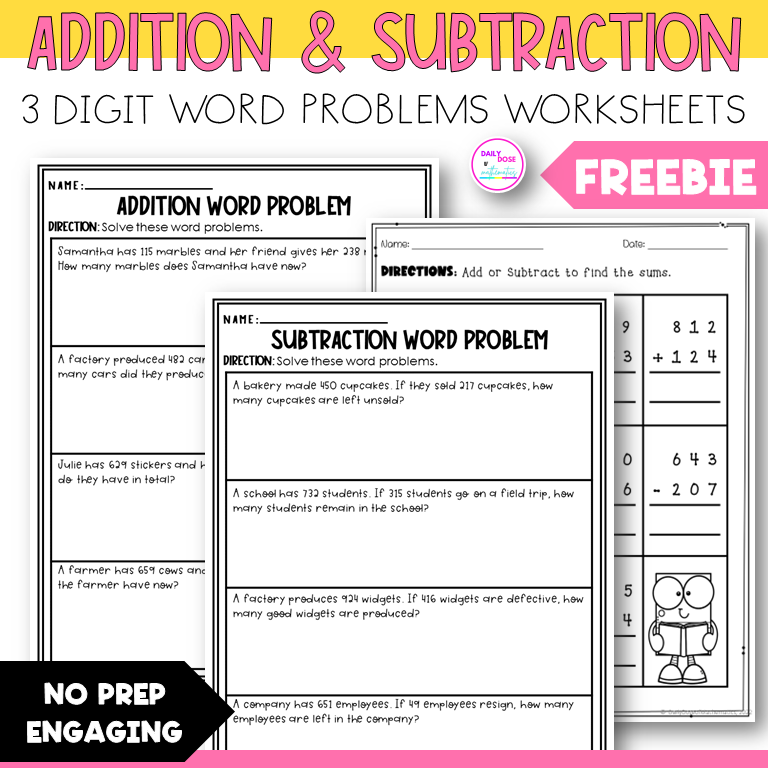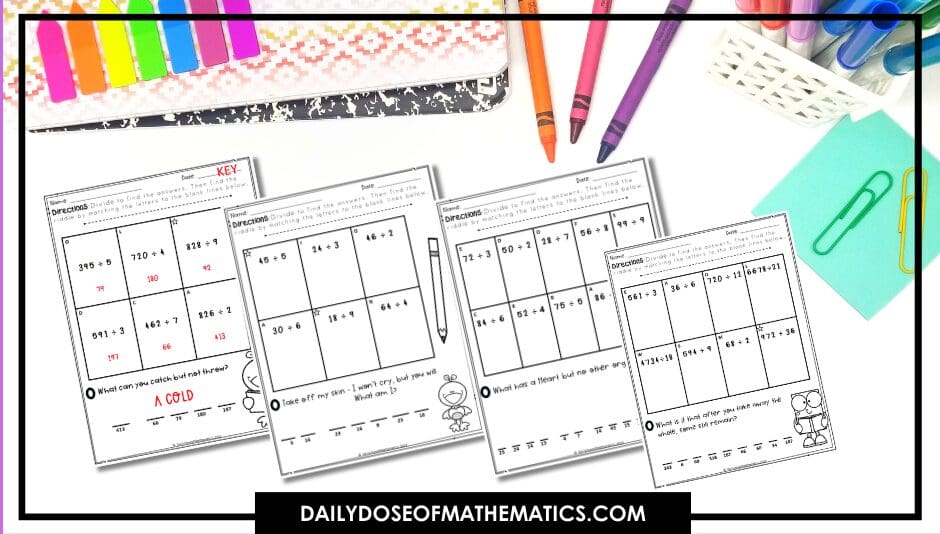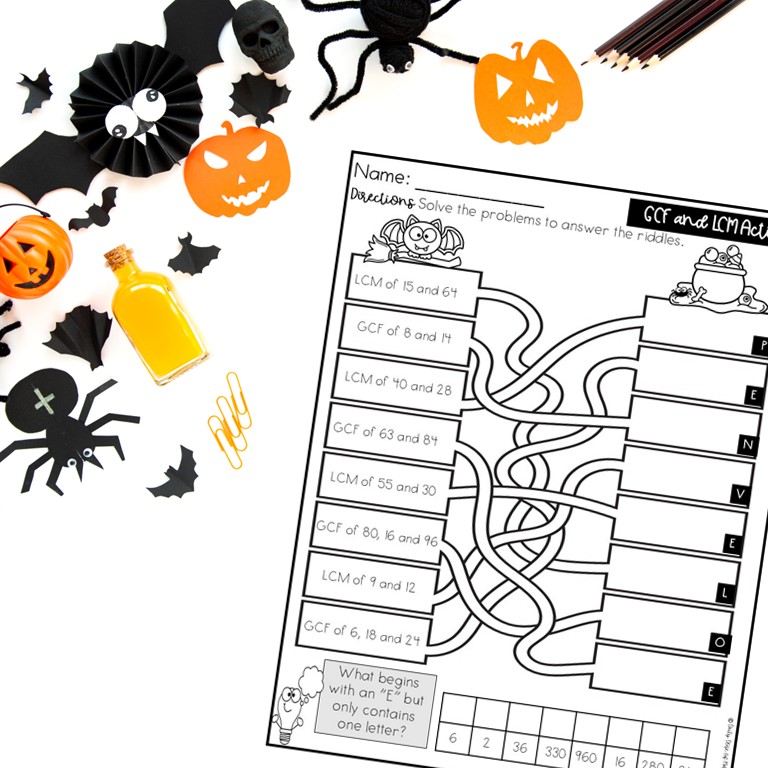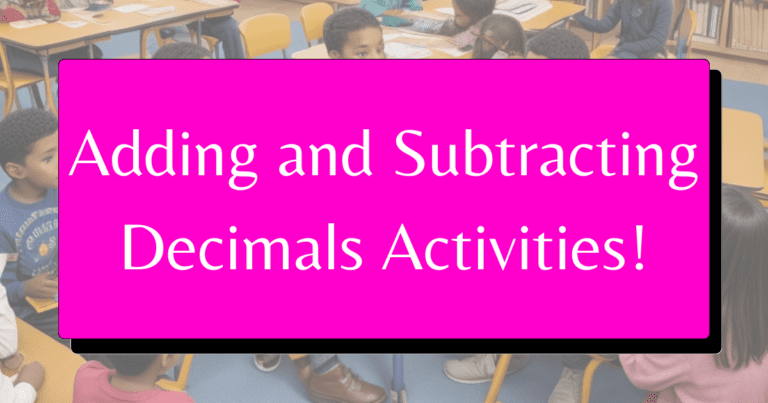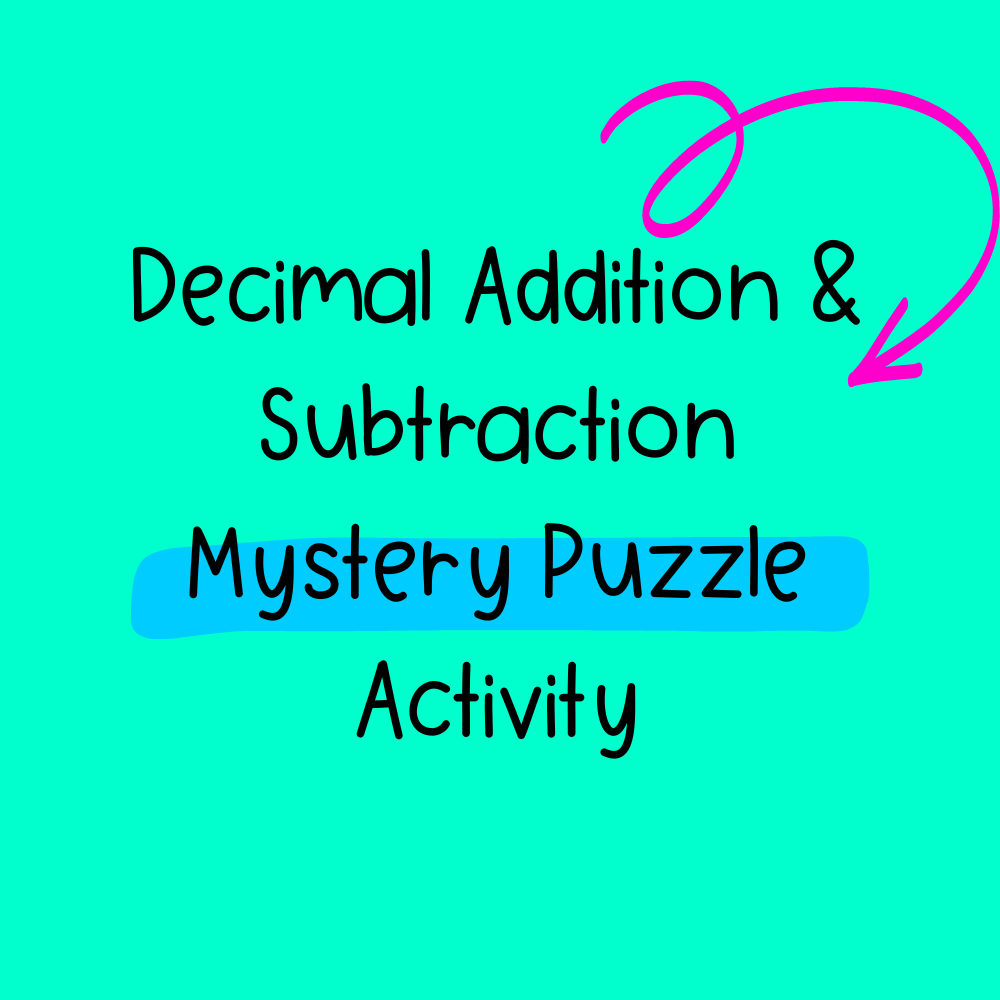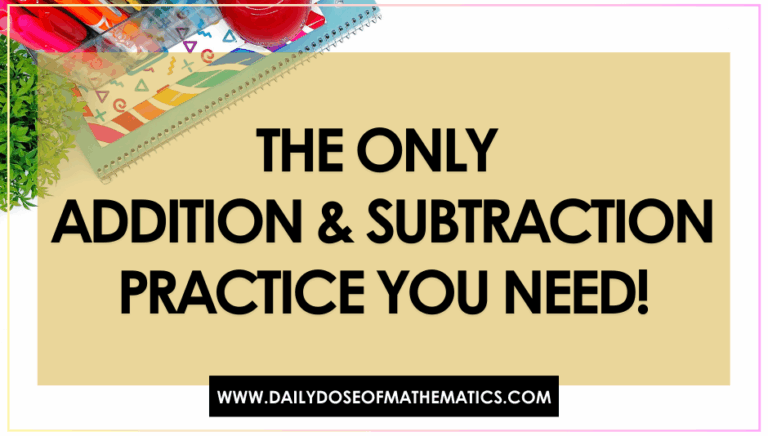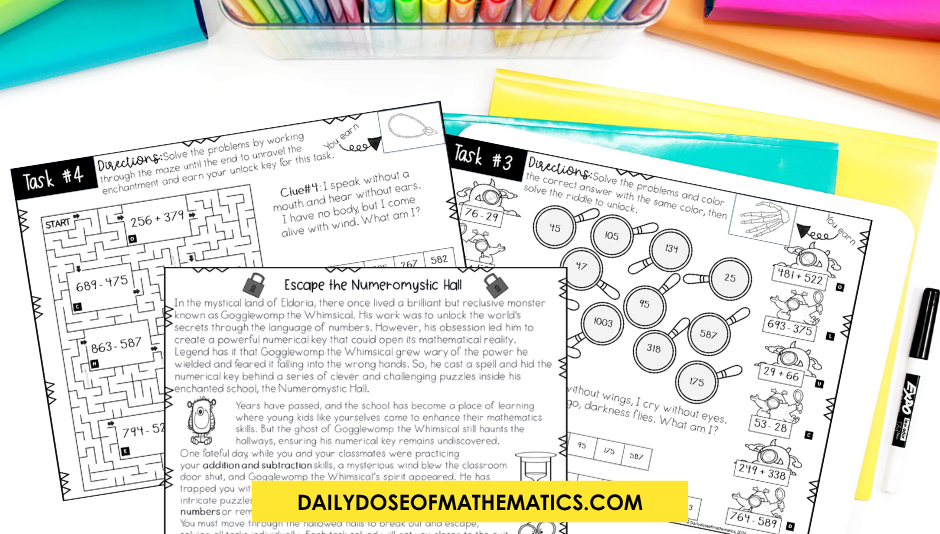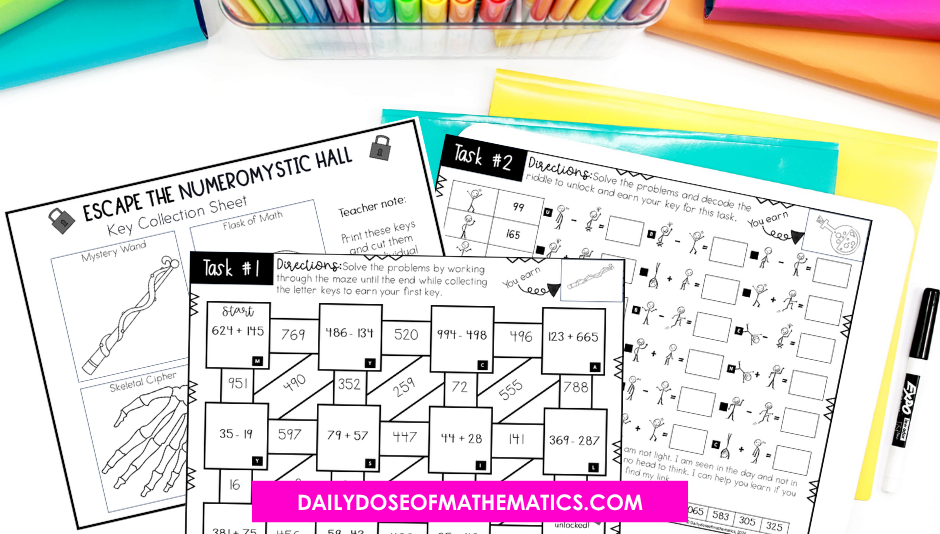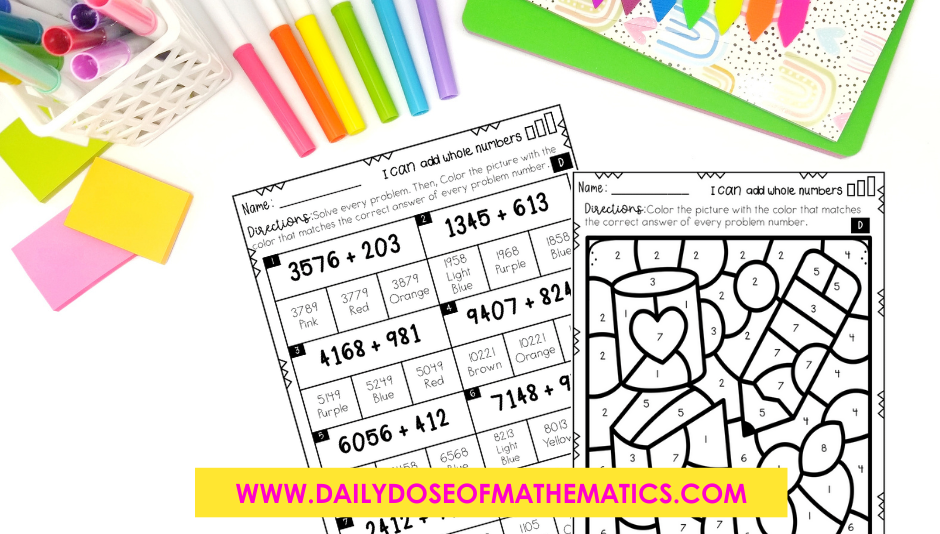Awaken a love for 3 digit addition: An unexpected benefit of gamified Math Lessons
All right, so we’re diving into the exciting and full of fun world of… 3 digit addition. As a math teacher myself, I know what you might be thinking! I know, I know. ‘three digit addition’ and ‘exciting’ are two phrases that you probably never expected to see in the same sentence. Yet, here we are!
But for a moment, I want you to picture this: your kids, completely absorbed, their minds buzzing away as they add numbers. No more expressionless eyes, no more “Do I have to?” Instead, they’re eager. They’re engaged. They’re learning. Sounds like a far-off dream? Well, it isn’t, and thanks to the gamified math lessons, this could be the reality of your classroom.
I remember when I was a kid, and math felt like a tedious chore. But honestly, I do not want that for my kids in the classroom, so it’s time that we as math teachers, put those days behind us.
Let’s make learning two and three digit addition and subtraction worksheets a game — literally. How? Here is a step by step month-long journey to transform 3 digit addition from ‘Ugh, not again!’ to ‘Can we do more?’ in your classroom.
Week 1: Nailing the basics of the concept of 3 digit addition
Ever tried to build a castle on sand? It’s a shaky business, right? The same goes for 3 digit addition with elementary students. If you’re shaky on the basics, teachers! Well, you’re setting your class up for a castle full of confusion. Let’s clear the air on this. Shall we?
Now, for your kids to understand 3 digit addition with and without regrouping, you first need to make them recognize the importance of place values. They should’ve got hundreds, tens, and ones down. To clarify this concept to your kiddos, you can tell them to picture hundreds, tens, and ones as three shelves in a bookcase, each with a specific spot for its ‘book’.
But the thing to remember here is that it’s essential for the numbers to go in their right place. Misplace the numbers, and you’ve got chaos!
Then comes the tricky bit: carrying over. A common hiccup, often as mystifying as a magician’s trick. But it does not have to be that. You can simplify it further for them. So, if your ‘ones’ total more than 9, you ‘carry over’ the extra to the ‘tens’ shelf. Same rule for the ‘tens’ to the ‘hundreds’. It’s like when you’re packing a suitcase, and it overflows – you need another bag!
Now, what about gamification in math? Think of it like turning broccoli into a superhero. Kids love games, right? So why not use that love to turn learning 3 digit addition and subtraction with and without regrouping into a thrilling adventure?
Gamification takes the chore out of learning, and makes it interactive, and here’s the important part: it leverages our innate love for rewards. There are several platforms and tools for gamification, with different colors suited to different needs.
Week 2: Preparing the Gamified 3 Digit Addition with and without regrouping Lessons
So you’re ready to transform your class into a gaming field. But which platform to choose? It can get overwhelming pretty quickly if you do not know exactly what you are looking for. More like being in a candy shop with infinite choices.
But what I can tell you from personal experience is that features, user feedback, and, most importantly, compatibility with your class size, age group, and tech comfort is all that matter.
Selecting a platform is just the beginning. Next, you’ve got to figure out a way to add your triple digit addition and subtraction curriculum to this platform. Initially, it might feel like you are doing a puzzle. You need to break down the curriculum into daily and weekly objectives, making sure each game fits seamlessly into the learning process.
Now the most important part here is to remember, that variety is the spice of your classroom! Mixing up games and keeping the interest alive is what you should aim for. Imagine being served the same dish every day. Boring, right? The same goes for your class. So spice it up with a variety of games.
Week 3: Rolling Out the Gamified Lessons

Now comes the big reveal. Introducing the new approach to students can be a dance as delicate as a ballet. The aim? To make sure they understand how the platform works, how it’ll be integrated into their learning, and – this is key – why it’s gonna be super fun.
As the lessons roll out, be ready to wear the hat of an eagle-eyed observer. Tracking progress, and providing feedback, it’s all part of the game. It’s like being a coach on the sidelines, guiding and cheering on the players.
Wanna know what I use to add a gamification touch to my 3 single digit addition worksheets in class, check this out on TPT!
Week 4: Evaluating Progress and Getting Ready for the Quiz
After the lesson is been done and you feel like your students get the concept it’s time for the big day! I mean Quiz day! Although students dread to go through a quiz, not in our gamified class! Here, quizzes are designed to mimic the game-based problems, making them less of a scary monster and more of a friendly challenge.
You can offer your students study aids and revision sessions to help them clarify any gaps in their learning. A little extra help won’t hurt anyone. Alongside this, you can gather progress reports for each student. Here you’re not just looking at who’s soaring and who’s stumbling but also pinpointing the areas where students commonly trip up.
And now, the finale of week four: prepping for the quiz. Make sure to review the main concepts, but more than that, ensure the students have a clear concept of the topic and what lies ahead.
You can even use these riddle Worksheets to evaluate your student’s early progress.
Quiz Day: The Ticket to 3 digit addition with ans without regrouping worksheets Stardom
Now comes the day the students have been working towards. The quiz. It’s the chance to put all that they’ve learned to the test.
The quiz results aren’t just numbers but celebrations of success and stepping stones for further learning. Each correct answer calls for a small classroom celebration, and each misstep is an opportunity to learn and improve. Remember, every cloud has a silver lining.
So there you have it. But remember it’s not just about the numbers, but about making learning an experience. It’s about taking those dread-filled, yawn-inducing lessons and turning them into a journey of exploration, excitement, and fun.
So, if you want to break the chains of traditional teaching and think outside the box, it’s time that you implement these strategies into your classroom and play. Gamified lessons aren’t just an educational trend. They’re the key to exposing engagement, sparking curiosity, and making your students not just learn but love the process.
Especially in a world where children are often glued to screens and gadgets, gamifying math lessons can serve as a link in our classrooms that merges education with entertainment in the most effective manner. So in order to take the ‘boredom” out of traditional math lessons and transform it into an exciting experience that students can enjoy while learning new math skills at the same time it’s more like a necessity now.
Want some ideas for assessing 3 digit addition in your class!
Some thoughts to consider:
As teachers, it’s our duty to make sure that every child in our class experiences the thrill of learning. With the right tools and approach, even the most seemingly mundane topics like 3 digit addition can become adventure journeys for exploration. By continuously experimenting with new techniques and, most importantly, making math fun we can make math exciting for our young generation. After all, isn’t that what education should be – an exciting journey of discovery for our students?
Remember, the journey of a thousand miles begins with a single step. You’ve got this. Just imagine, a classroom humming with excitement, picture the pride on your students’ faces when they nail a complex 3-digit addition problem, not because they had to, but because they wanted to.
Conclusion:
You have the power to turn ‘boring math Class‘ into ‘bring it on!. To replace sighs of boredom with cheers of excitement. To transform ‘I don’t get it’ into ‘I did it!’.
In a nutshell, it’s not just about math. It’s about equipping our children with the courage to tackle challenges, the resilience to keep going, and the joy of learning.
Since the methods of teaching in education are always evolving, it’s crucial that we continually seek methods that not only enhance the learning experience but also ignite a passion within our students.
Gamified math 3 digit addition lessons can bridge the gap between conventional teaching and the digital age. By transforming the seemingly mundane task of 3-digit addition practice into an engaging journey, we aren’t just teaching numbers – we’re nurturing a love for learning.
The unexpected joy and enthusiasm that arise from such methods prove that with the right tools and mindset, even the most traditional subjects can be refreshed and revitalized. Let’s continue to innovate and inspire, turning challenges into opportunities and learners into lifelong enthusiasts. After all, when education is fun, the sky’s the limit.
Join in to get special FREEBIES and Insider’s FUN!


